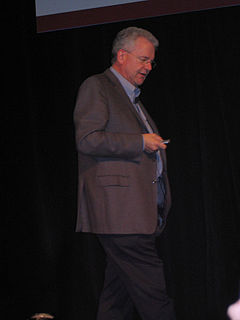A Quote by Clayton M. Christensen
Efficiency innovations are a natural part of the economic cycle, but these are the innovations that streamline process and actually reduce the number of available jobs.
Related Quotes
Companies, in fact, are specifically organized to under-invest in disruptive innovations! This is one reason why we often suggest that companies set up separate teams or groups to commercialize disruptive innovations. When disruptive innovations have to fight with other innovations for resources, they tend to lose out.
The reason why it is so difficult for existing firms to capitalize on disruptive innovations is that their processes and their business model that make them good at the existing business actually make them bad at competing for the disruption. Companies in fact are specifically organized to under-invest in disruptive innovations! This is one reason why we often suggest that companies set up separate teams or groups to commercialize disruptive innovations. When disruptive innovations have to fight with other innovations for resources, they tend to lose out.
The Republicans are wrong in thinking that the rich create jobs. In reality, many of the richest Americans have been investing in efficiency innovations rather than to create jobs. And the Democrats are wrong, because growth won't happen if they distribute the wealth of the wealthy to everyone else.
The recent period has been marked by a transformation to an economy that is more productive as competitive forces become increasingly intense and new technologies raise the efficiency of our businesses...While these tendencies were no doubt in train in the "old," pre-1990s economy, they accelerated over the past decade as a number of technologies with their roots in the cumulative innovations of the past half-century began to yield dramatic economic returns.



























